Perioperative NCLEX questions with Answers latest Graded A+
Document Content and Description Below
A 26-year old client comes into the clinic prior to a tonsillectomy. Which action is priority during this phase of surgery? a. Intraoperative consent signed b. Intraoperative medication c. Pr... eoperative assessment d. Postoperative assessment - ANSWER c. Preoperative assessment The client is in the preoperative phase of surgery and must be assessed and prepared for surgery. The client may have labs drawn, medication administered, and consent forms signed. The intraoperative phase is the actual surgery; the client is anesthetized, prepped, draped, and surgery performed. The postoperative phase is the recovery phase of surgery where the client continues to recover until maximum health is achieved. A 76-year old client is to undergo a hernia repair. The nurse knows that in order to aid in the healing process, the perioperative nurse must assist the client with which concept during what surgical phase? a. Perfusion therapy during the intraoperative phase b. Wound healing during the postoperative phase c. Wound healing during the preoperative and intraoperative phase d. Infection during the postoperative phase - ANSWER c. Wound healing during the preoperative and intraoperative phase Inadequate control of stress and coping mechanisms can prolong the perioperative healing process and a client's prognosis. Perioperative care includes assessing client stress and coping mechanisms during the preoperative phase and reassessing following the procedure. Postoperative infections may occur as a result of improper wound care or hospital acquired infections may occur as a result of infection control protocols not being followed. Adequate perfusion enhances wound healing and perioperative recovery. Nurses providing intraoperative and postoperative care must follow infection protocols. A 65-year old client is having neck surgery. Which nursing diagnosis does the nurse include for this client? a. Risk for burns b. Risk for fluid volume: Deficient c. Ineffective pain control d. Risk for fluid volume: Excess - ANSWER b. Risk for fluid volume: Deficient Risk for Fluid Volume: Deficient is related to any blood loss during the client's surgery and NPO status. Risk for Burns is unrelated; there is no indication for Fluid Volume: Excess or Ineffective Pain Control. An 18-year old client is admitted to the emergency room for an emergency appendectomy. The nurse knows that which assessment is priority with each perioperative phase a. Medication assessment b. Pain assessment c. History and physical d. Systems assessment - ANSWER d. Systems assessment While the other assessments are important, a systems assessment is priority and can be completed with each perioperative phase, making sure the client remains at baseline throughout. A 43-year old client is undergoing a CABG. What priority understanding does the nurse have about perioperative documentation? a. If it was not written, it was not done b. It includes all steps of the nursing process c. It's a legal document subject to internal review d. It keeps the nurse and patient safe - ANSWER b. It includes all steps of the nursing process All answers are correct; however, the priority understanding of perioperative documentation is that it includes all steps of the nursing process including assessment, diagnosis, identified outcomes, planning, implementation, and evaluation. A client diagnosed with gallbladder disease decides to undergo a laparoscopic cholecystectomy as opposed to an open procedure. The nurse realizes the client chose the laparoscopic surgery due to what reason? a. The laparoscopic surgery has a higher infection rate b. The laparoscopic surgery requires a shorter hospital stay and recovery c. The open surgery is more expensive d. The open surgery scars are less noticeable - ANSWER b. The laparoscopic surgery requires a shorter hospital stay and recovery Laparoscopic surgeries are less invasive and usually require a shorter hospital stay and recovery. Also, due to the small incision sites the patient is at a lower risk for acquiring a surgical site infection (SSI) and experiences less blood loss. Open procedures usually require a longer hospital stay and longer recovery period. Open procedures also place the client at a higher risk for blood loss. Larger incisions place the client at a higher risk for complications, such as hypothermia and surgical site infections. A 55-year old woman with sleep apnea is having a double mastectomy with reconstruction performed today. What priority complication is important for this client? a. Loss of blood and infection complications b. Infection and airway complications c. Injury and loss of blood complications d. Airway and VTE complications - ANSWER d. Airway and VTE complications A double mastectomy with reconstruction can take from 9-12 hours. The client has sleep apnea, so the length of the procedure increases the client's risk for complications. Shorter procedures benefit clients of all ages: Less exposure time decreases the risk for physiologic complications and reduces the time required for healing. The longer the client is exposed to anesthesia, the more it lengthens recovery time and risk for complications. The client's risk of hypothermia increases with the time required for healing and increases the risk for venous thromboembolism (VTE). Procedures lasting 30 minutes or longer may call for clients to wear SCDs (mechanical method used to prevent venous thromboembolism (VTE)). The greater risk for blood loss necessitates a blood transfusion either intraoperatively or on admission to the medical unit. A client is rushed into surgery following an MVA. The client must receive a blood transfusion to sustain life but is a Jehovah's Witness. What priority intervention by the nurse is the most appropriate? a. Obtain consent for an autologous blood transfusion b. Do not ask for consent; give the blood anyway c. Tell the family the client will die without the blood d. Do nothing; the family will not change their minds - ANSWER a. Obtain consent for an autologous blood transfusion Many Jehovah's Witness clients, due to their beliefs, do not receive blood, even if it is a life saving measure. Some Jehovah's Witness clients sign only the consent to receive autologous blood. The perioperative nurse needs to understand and accept this belief. Therefore, when the nurse presents the Jehovah's Witness client with the blood consent to sign, the nurse cannot ask questions or try to persuade the client. The nurse identifies the postoperative client as being at an increased risk for impaired oxygenation. Which is the best nursing intervention to address this client's problem? a. Provide antibiotics as prescribed b. Medicate for pain as prescribed c. Administer 1 unit platelets as prescribed d. Apply oxygen 2 liters by face mask as prescribed - ANSWER d. Apply oxygen 2 liters by face mask as prescribed For a client at risk of impaired oxygenation, applying oxygen 2 liters by face mask would be the appropriate intervention to implement. Providing an antibiotic as prescribed would be applicable if the client were at risk for an infection. Medicating for pain would address the problem of comfort. Providing platelets would be appropriate for perfusion or coagulation problems. The nurse measures the client's blood pressure, pulse, and capillary refill prior to sending the client to the operating room. Which concept related to perioperative care is the nurse implementing? a. Quality control b. Perfusion c. Safety d. Infection control - ANSWER b. Perfusion The concept of perfusion is related to perioperative care. Nurses must be aware of the client's hemodynamic status and understand the guidelines for perfusion. The client's hemodynamic status is measured through blood pressure, pulse, and capillary refill. Measuring blood pressure, pulse, and capillary refill does not directly support the concepts of safety, quality control, or infection control. A preoperative client asks if blood products will be used during the procedure. Which laboratory values should the nurse explain are used to determine the client's need for blood products? (SELECT ALL THAT APPLY) a. Hemoglobin b. Hematocrit c. Prothrombin time d. Red blood cell count e. Platelets - ANSWER a. Hemoglobin b. Hematocrit d. Red blood cell count e. Platelets The diagnostic tests of platelets, hematocrit, hemoglobin, and red blood cell count are used to determine if a blood transfusion is needed during the surgical procedure. Prothrombin time is used to determine the client's risk for bleeding. The nurse is preparing a client for a surgical procedure to remove a portion of the transverse colon. Which priority actions should the nurse include to reduce the client's risk of developing a postoperative complication? (SELECT ALL THAT APPLY) a. Observe for muscle twitching b. Monitor body temperature c. Monitor blood pressure and heart rate d. Ensure aseptic technique is used for the procedure e. Monitor urine concentration - ANSWER b. Monitor body temperature c. Monitor blood pressure and heart rate d. Ensure aseptic technique is used for the procedure [Show More]
Last updated: 1 year ago
Preview 1 out of 8 pages
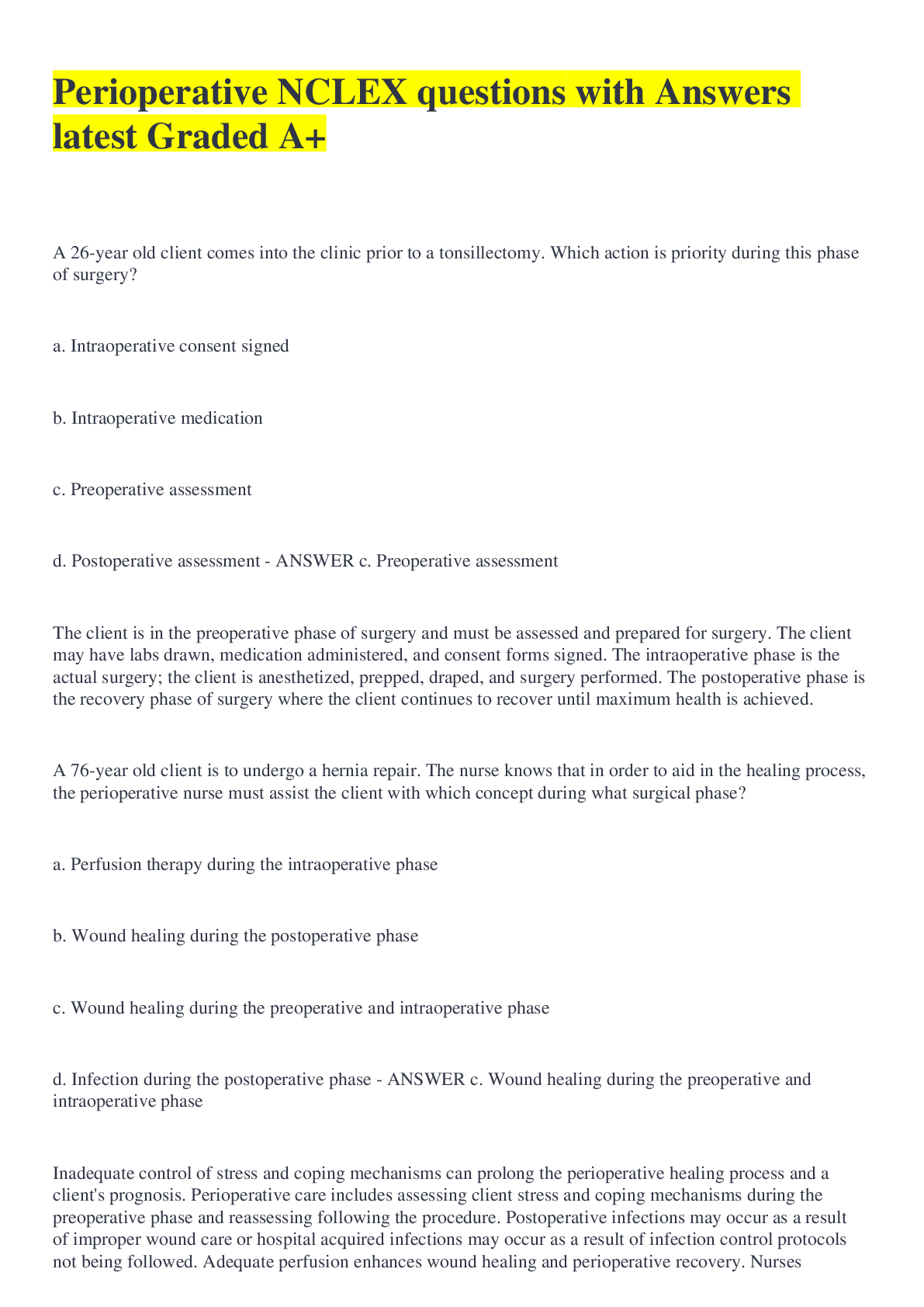
Reviews( 0 )
Document information
Connected school, study & course
About the document
Uploaded On
Sep 18, 2022
Number of pages
8
Written in
Additional information
This document has been written for:
Uploaded
Sep 18, 2022
Downloads
0
Views
100

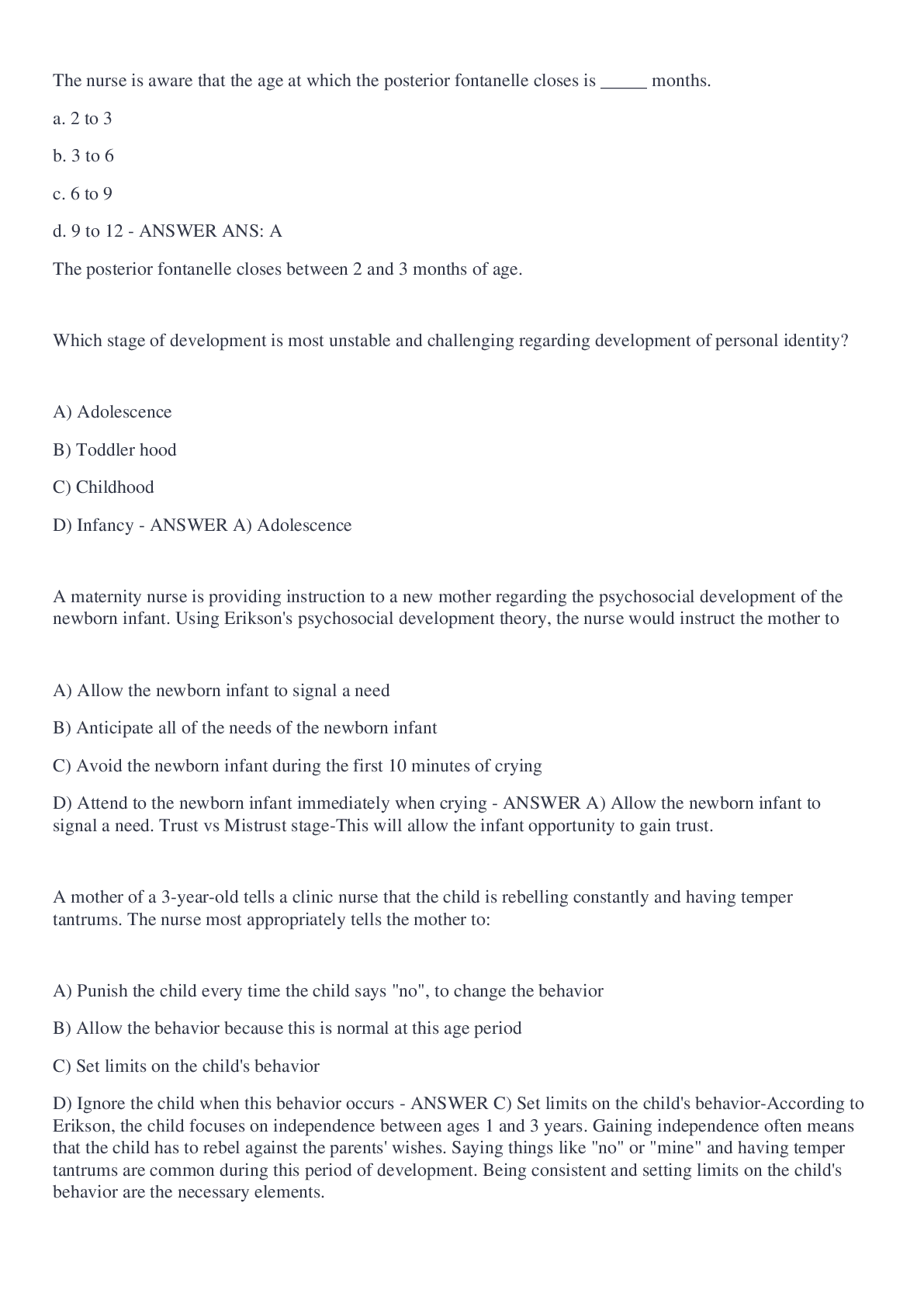
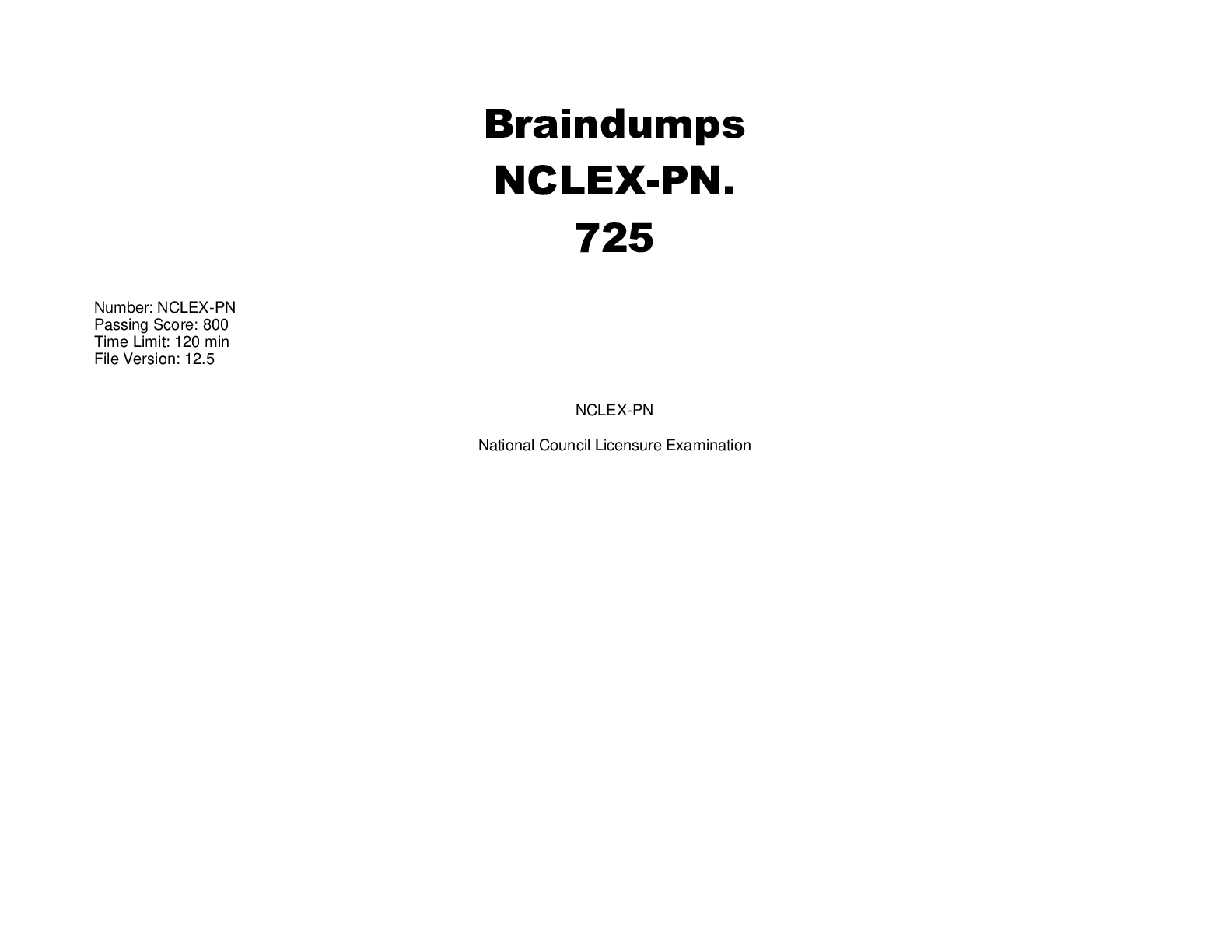

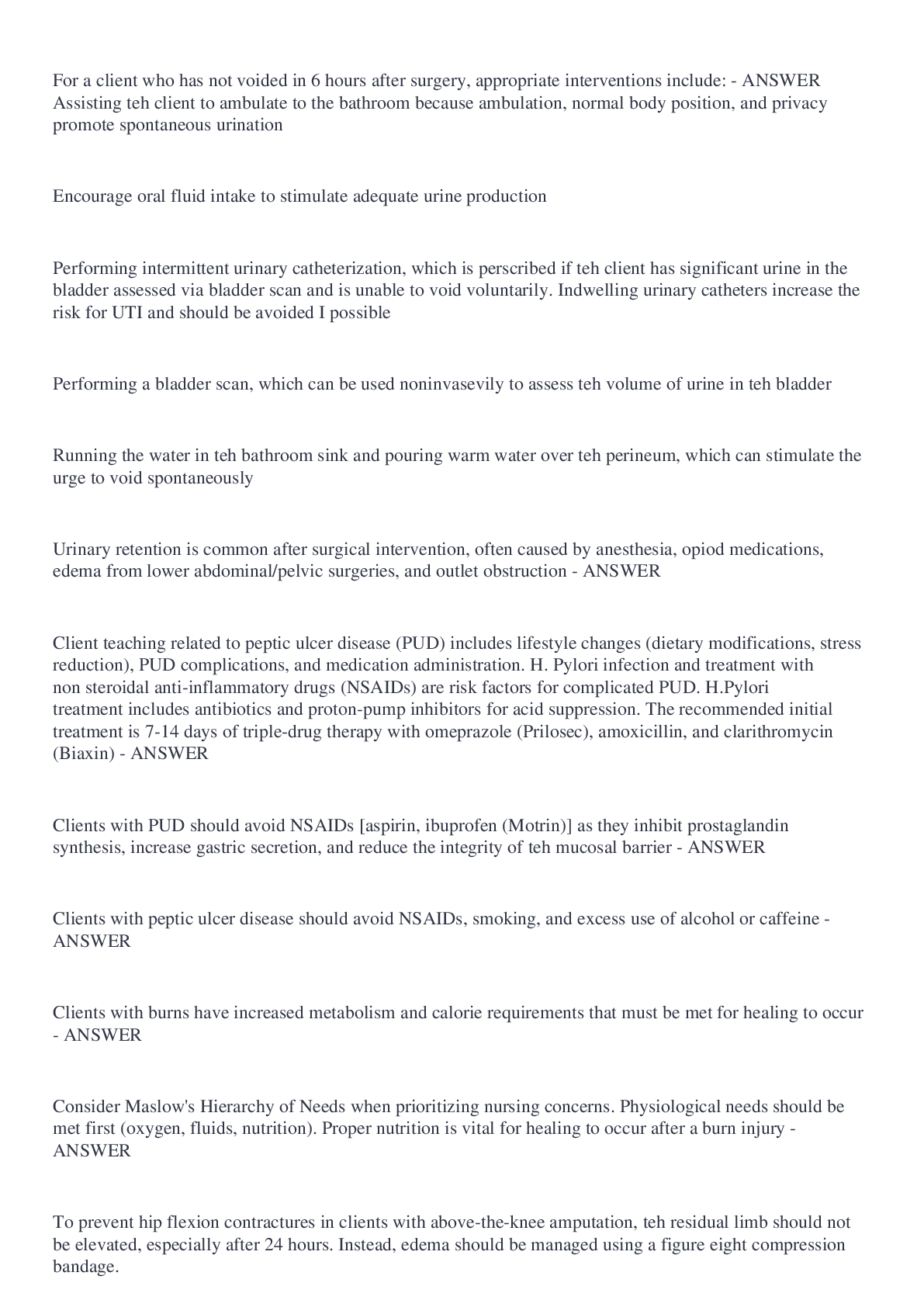
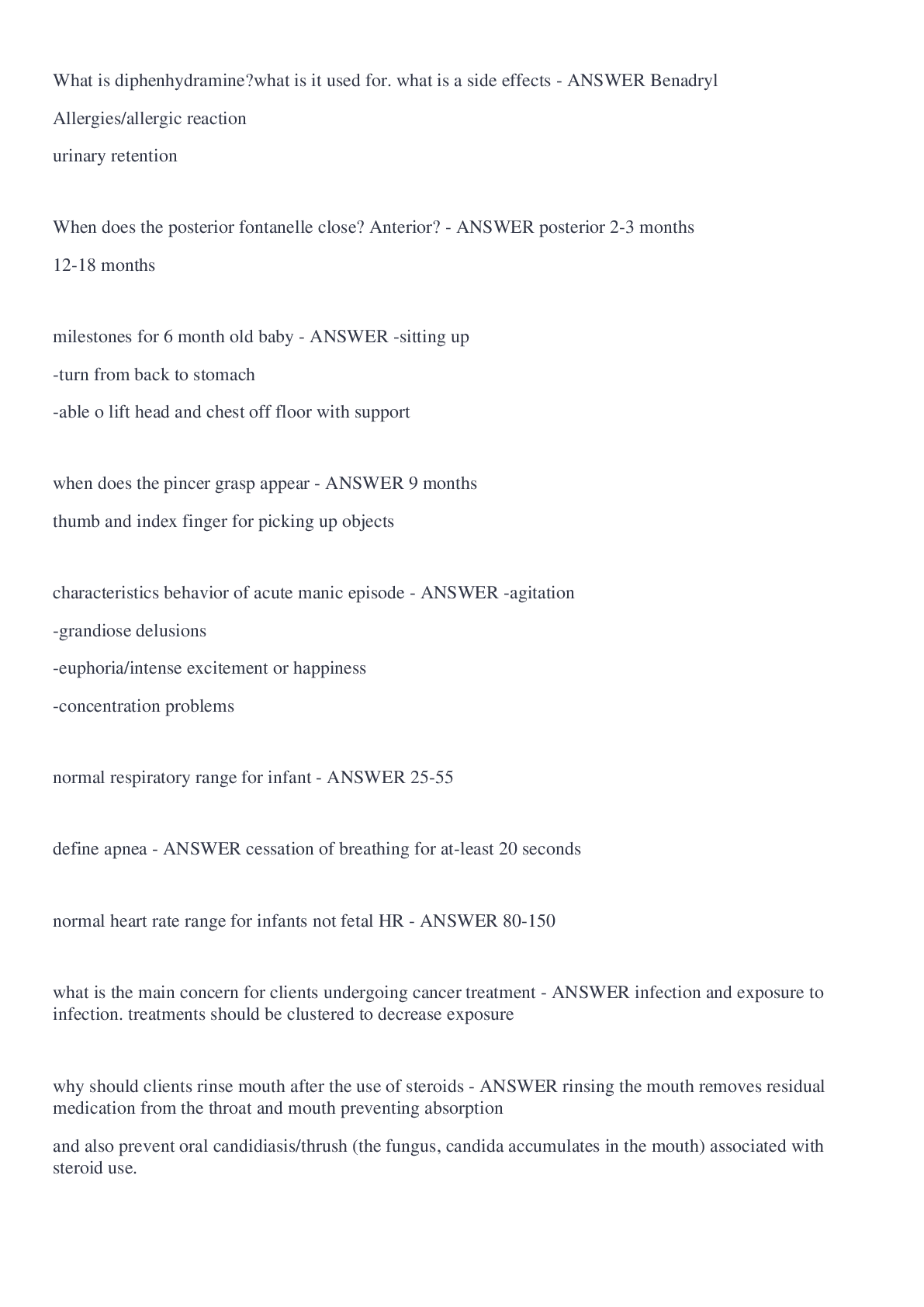
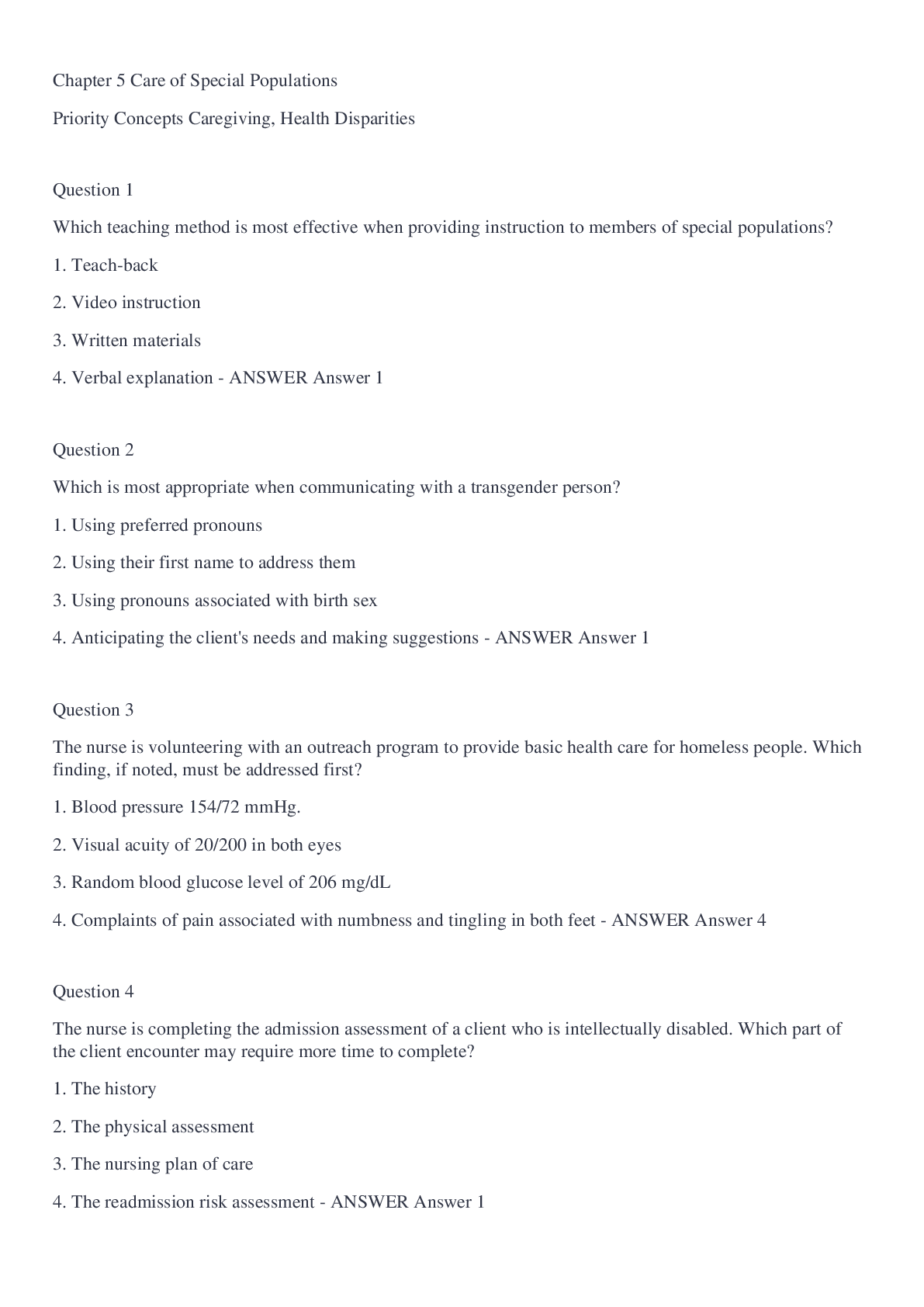



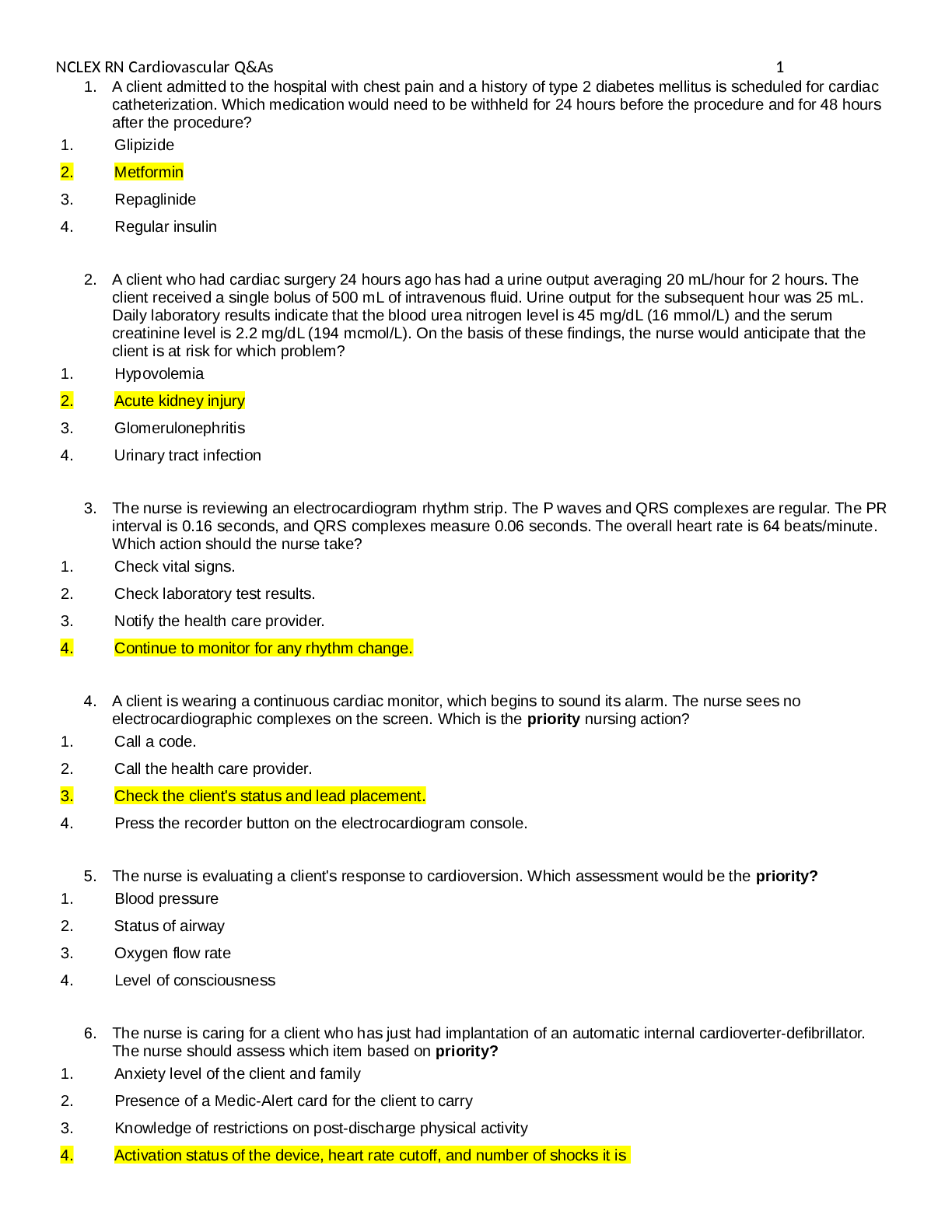
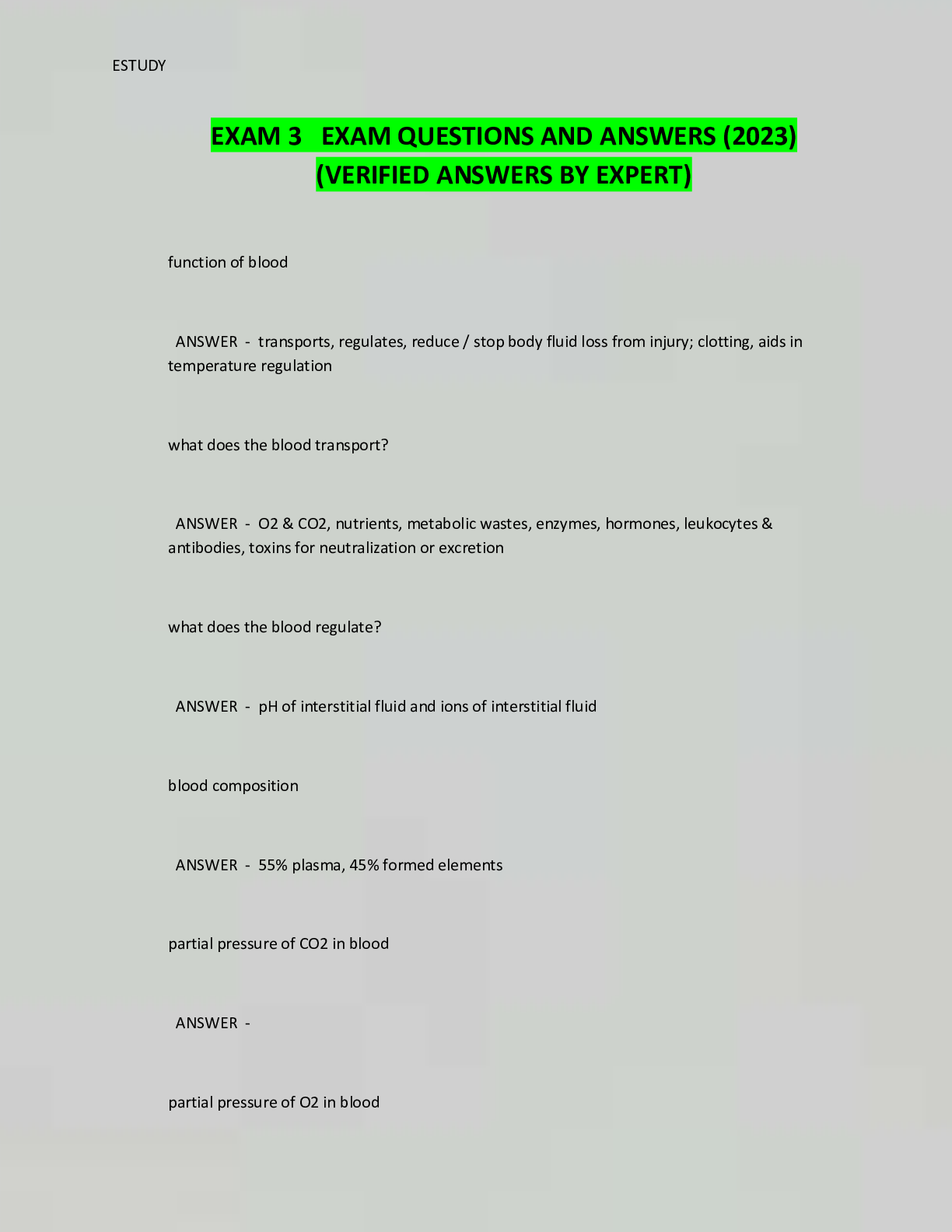
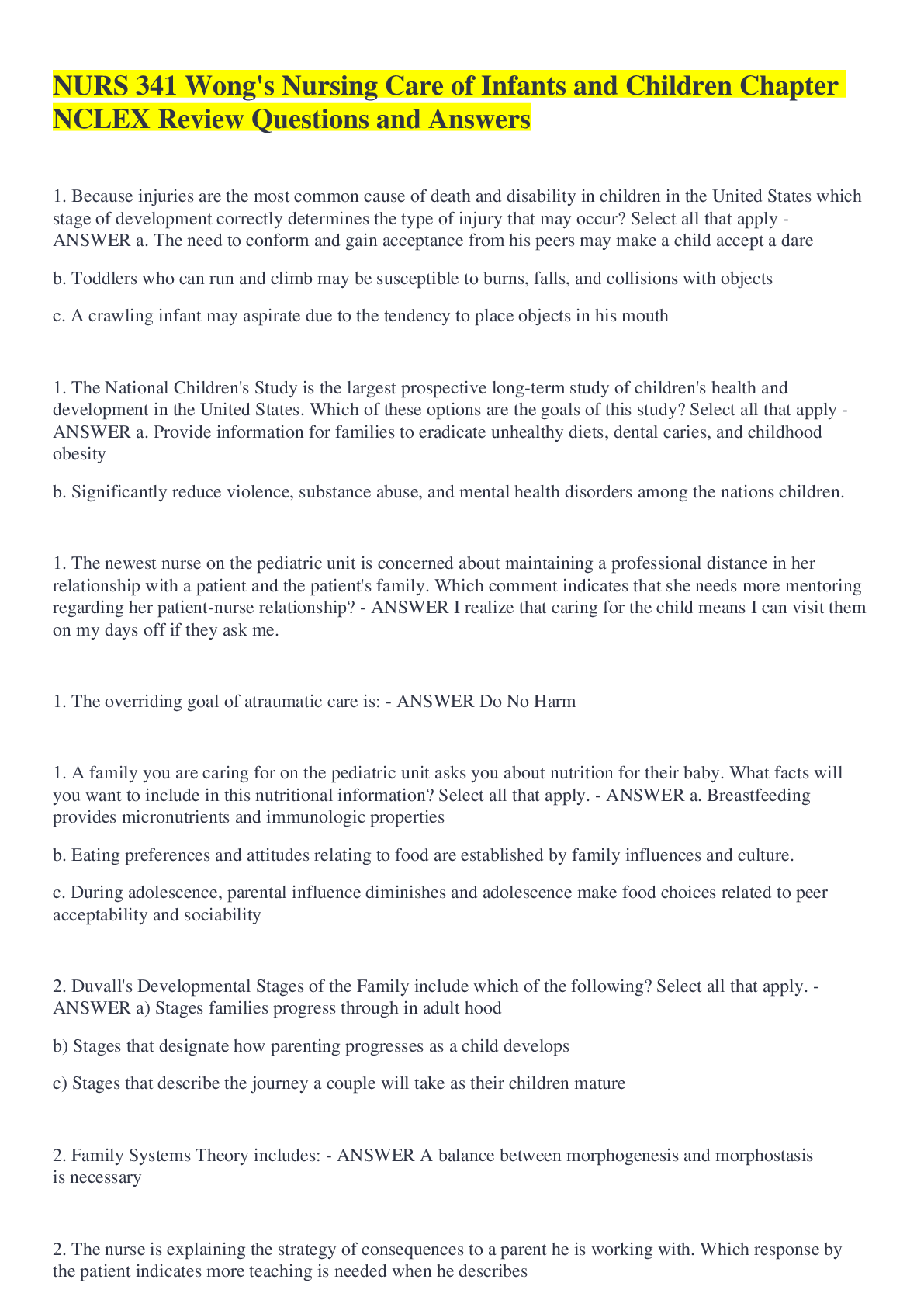


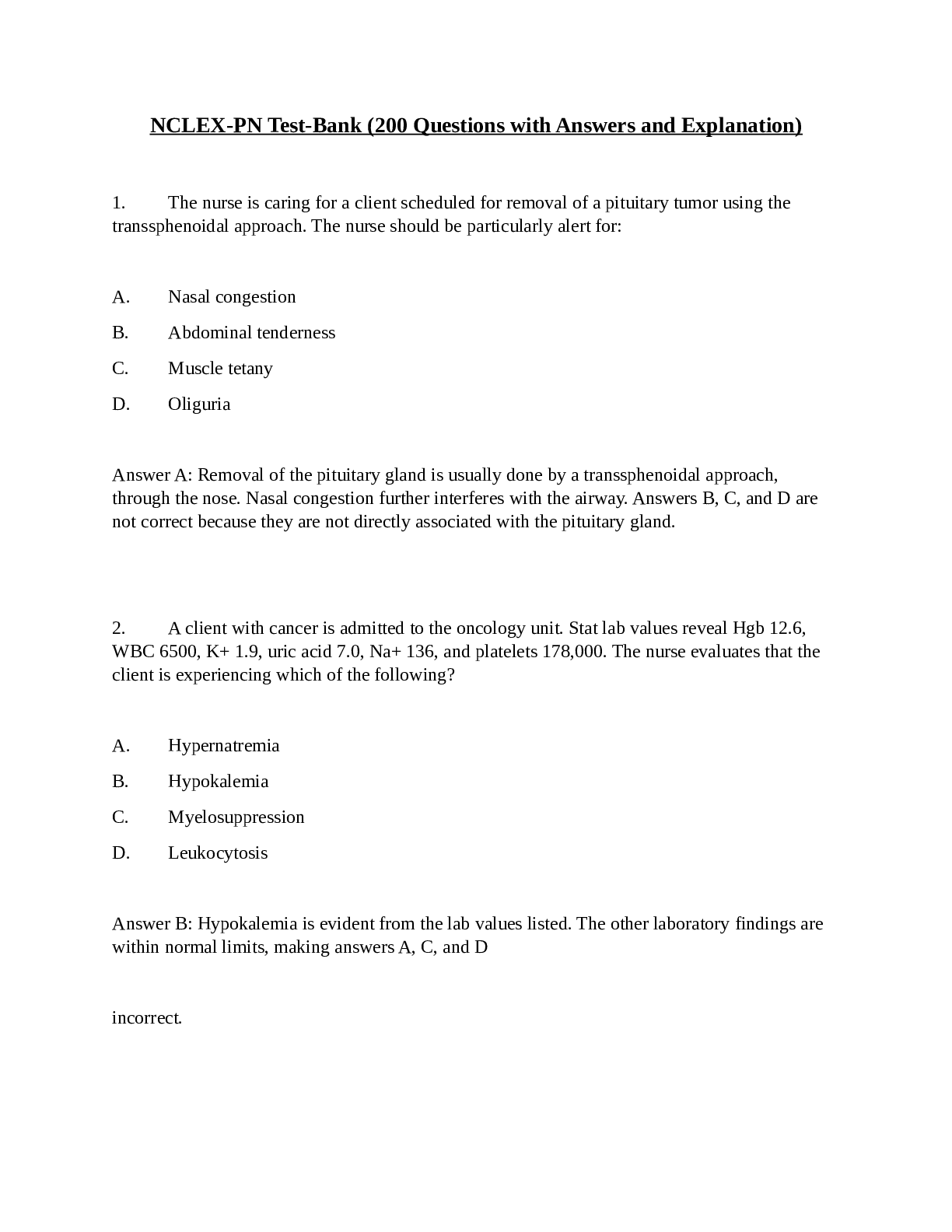

.png)
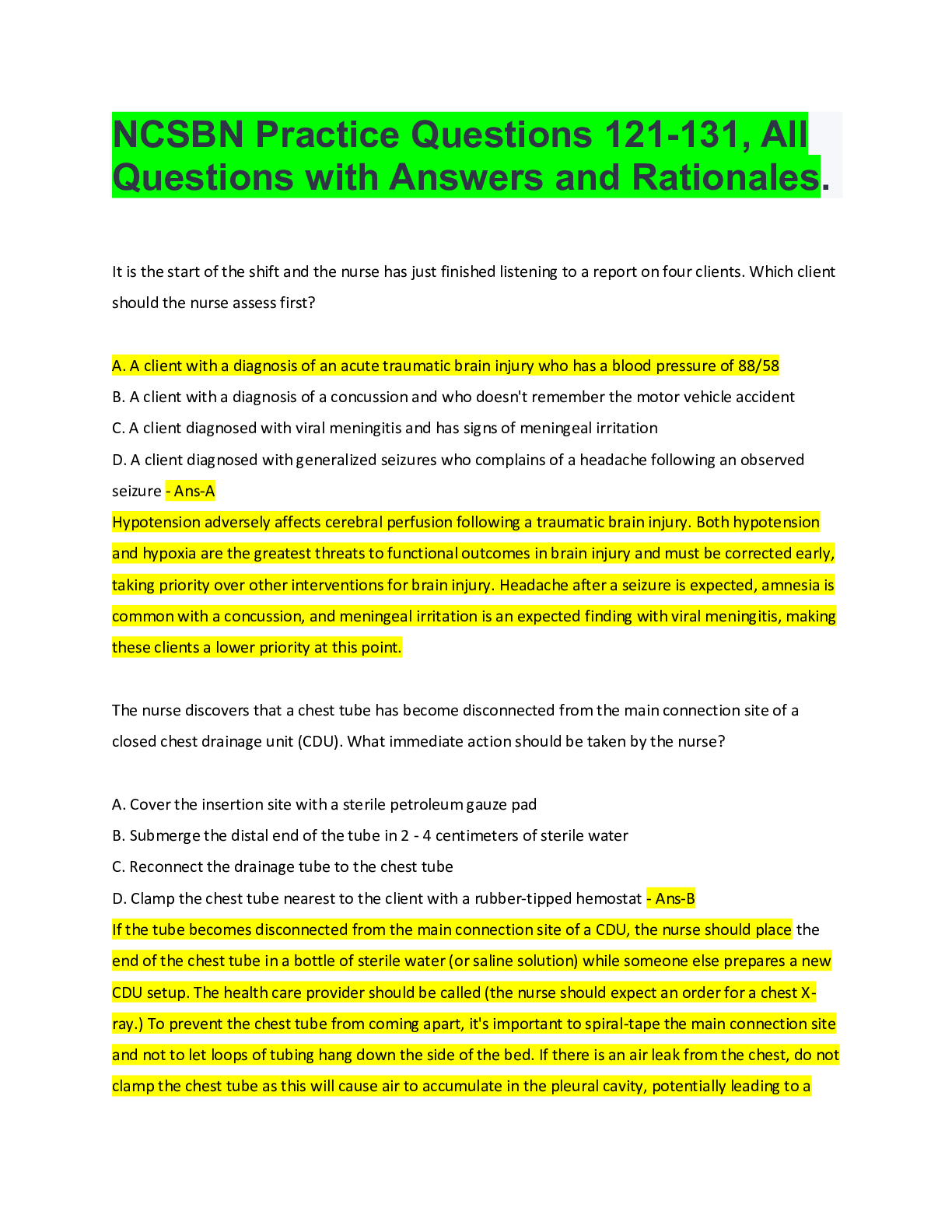
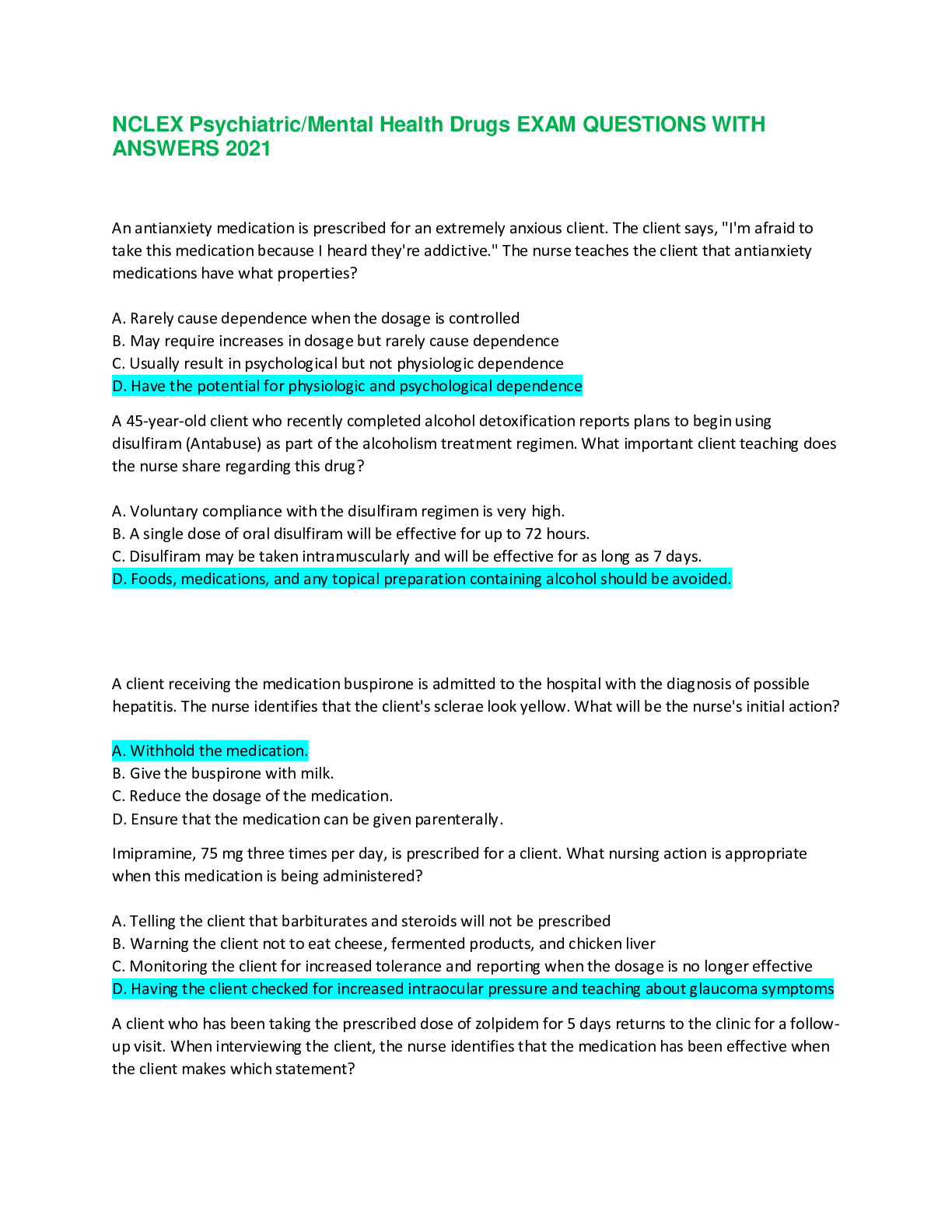


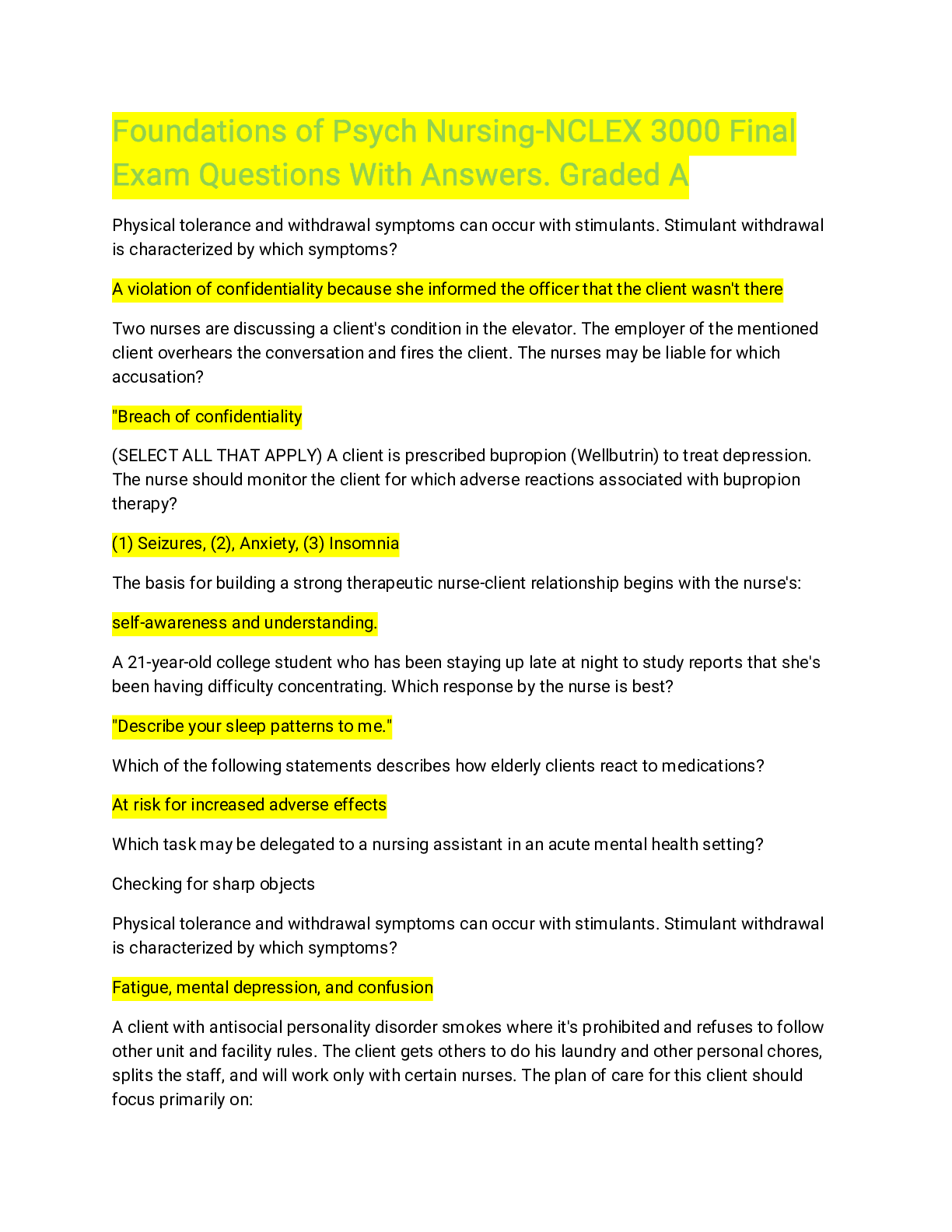
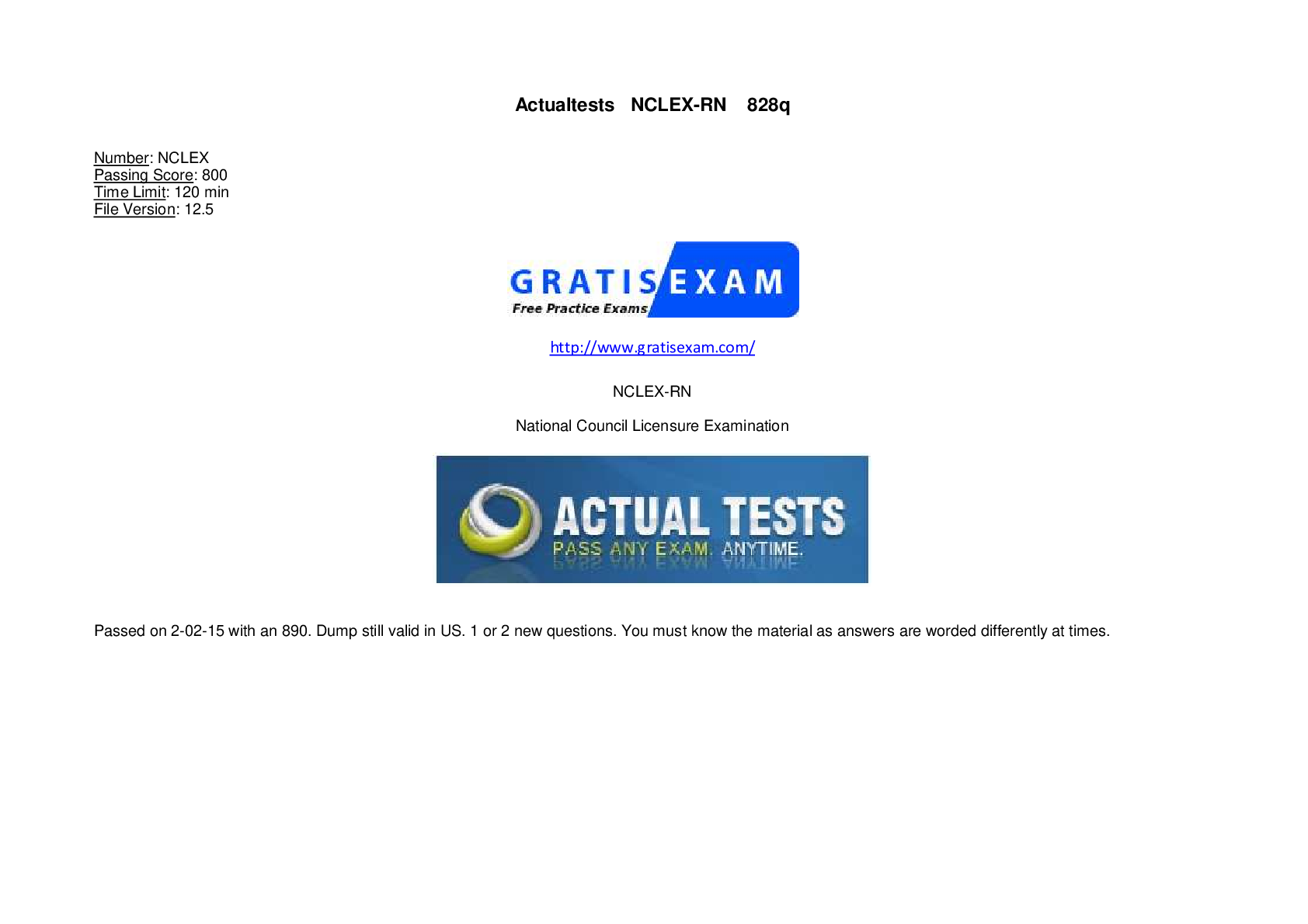
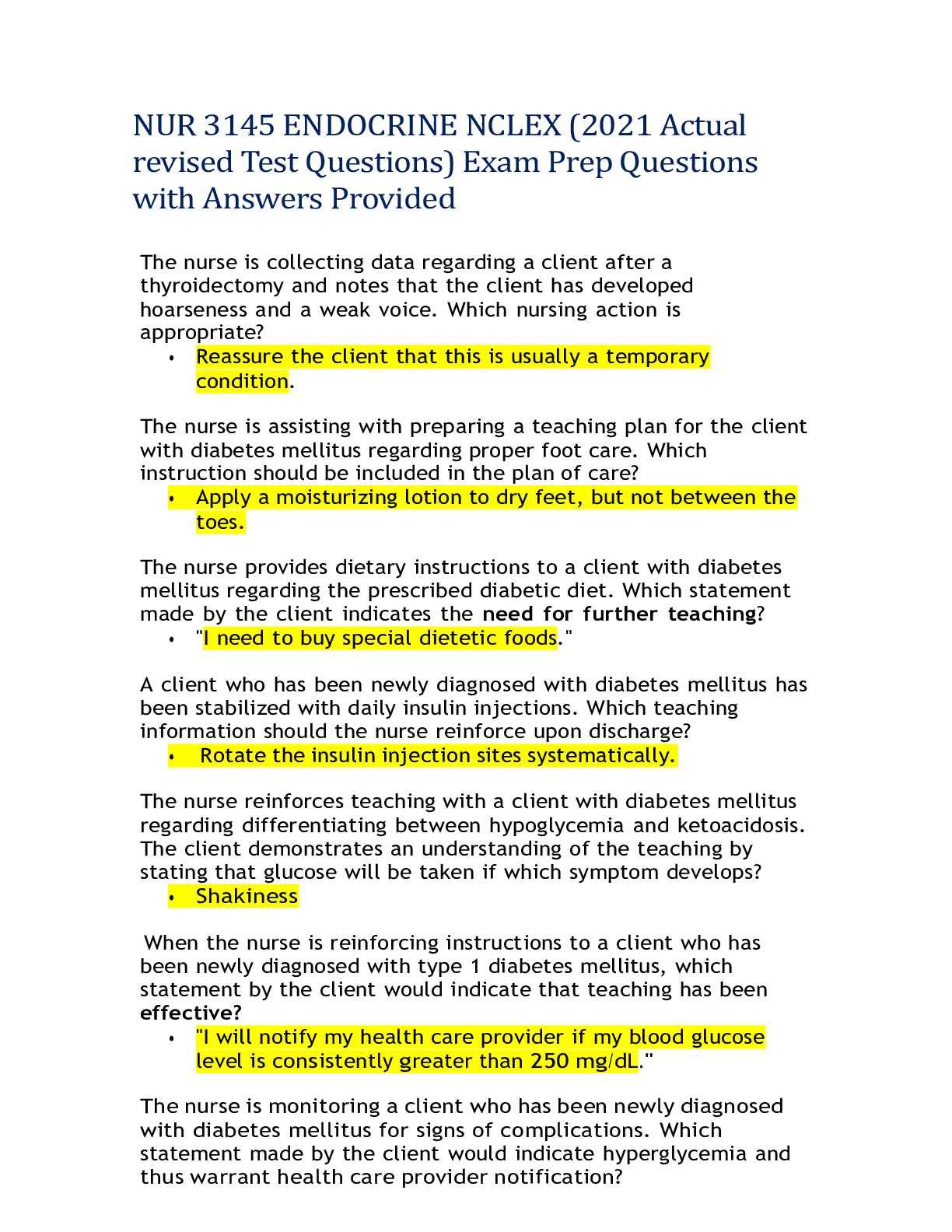
.png)
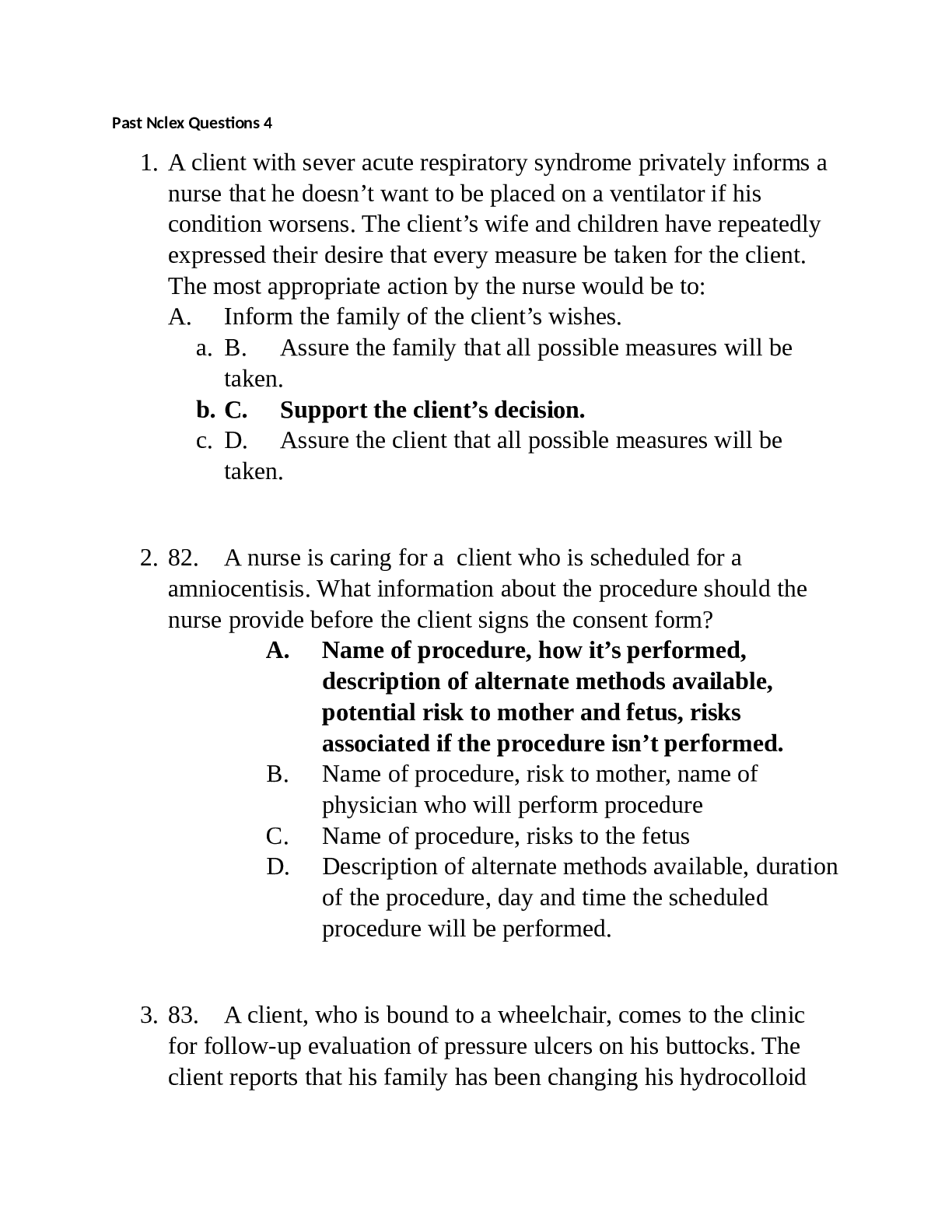
 (1).png)
.png)



